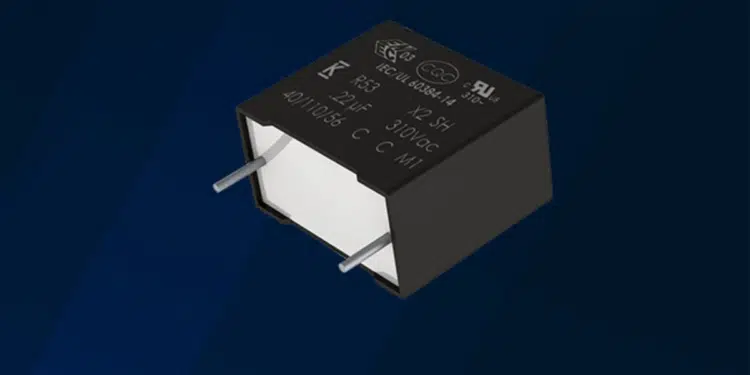R53 film capacitor is miniaturized, AEC-Q200 qualified, and has the highest IEC robustness classification for applications requiring the highest reliability and extended life under severe, harsh environmental conditions.
KEMET, part of the YAGEO Group and leading global electronic components supplier, announces its new R53 series of miniature, polypropylene film X2 EMI (electromagnetic interference) suppression capacitors. This series fulfills the growing need for automotive, industrial, consumer, and energy applications that require a smaller, high-capacitance X2 class solution for suppressing EMI. The R53 series offers capacitance values from 0.1µF to 22µF, lead-spacing from 15mm to 37.5mmm, 85/85 THB Class IIIB classification, and long-life stability in harsh environmental conditions. Its volume, on average, is 60% smaller than competitive X2 class capacitors, enabling a smaller PCB area, reduced weight, lower costs, and improved reliability. These features position R53 as an exceptional X2 class solution that addresses design engineers’ size, capacitance, and reliability challenges across multiple industries.
Currently, available solutions comparable to the R53 series have either larger dimensions or require capacitors in parallel in the design. With a rated 310Vac at 50 or 60Hz, this series is intended for use in Class X2 line-to-line applications or in series with the AC mains. R53 is well-suited for AC/DC converters in onboard chargers for xEVs, smart grid hardware, EMI filtering in Variable Frequency Drivers (VFDs), LED drivers, and high energy density applications such as capacitive power supplies. R53 series features a metallized polypropylene film encapsulated in a self-extinguishing resin and a shell that meets UL 94 V-0 requirements. The metallized polypropylene film combined with an internal parallel construction provides self-healing properties to prevent catastrophic failure and extend service life.
Electronic component miniaturization and operation in harsh environmental conditions are growing in applications, such as onboard chargers, smart electric meters, capacitive power supplies, including connection in series with the mains, motor drives, wind, and solar inverters. R53 capacitors are AEC-Q200 qualified, designed for harsh environments, and meet the highest standards of reliability required for smart grid hardware, often located in limited access areas where regular service is not available.































